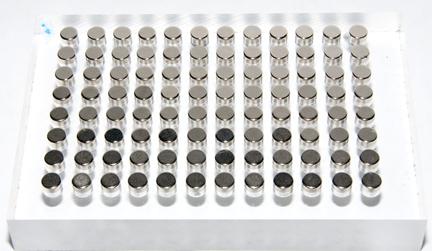Isolation and expansion of primary cells using magnetic particles and magnetic system are very commonly employed in the research labs. It is a very established technique and has been in use for several years. This method is based on the separations of various cell populations of interest based on their cell surface antigens (CD molecules). Magnetic based cell isolation is used in areas such as cancer research, immunology, neuroscience and stem cell research.
If the cells are isolated from a primary tissue, first the tissue has to be digested or manually processed to make it a single cell suspension as much as possible. Some of the digestion process involves incubation the tissue with certain enzymes. Example, Single cell suspensions of chondrocytes or osteoblasts are prepared by incubation cartilage or bone tissue incubated with collagenase enzyme. The magnetic based system allows cell to be separated by incubating with magnetic particles coated with antibody against specific antigen present on the cell surface of interest. During the incubation, cells bind to particles coated with magnetic antibody. After a brief period of incubation, the mixture of cells bound with magnetic particles is placed on a magnetic stand. This can be done in large numbers in a 96 well plate format, or tubes such as 2ml, 15 ml or 50 ml tubes depending on the volume desired. Magnetic stands with very powerful magnets are available for 96 well plates with 96 separate magnets (MAG96), 2ml tubes with 24 magnetic systems and one for 15 ml/ 50 ml tubes (MAG50).
During this selection process, the cells with specific antigen bound to magnetic particles linked to the specific antibody will adhere to the magnet. The cells, which do not have that antibody, will not bind to the magnet and will be free. The free cells in the medium are gently washed away and the remaining population is the desired population of cells.
Using this method cells can be isolated using a positive selection or negative selection. In a positive selection method, cells expressing antigen of interest which is bound to the magnet is isolated while the unattached cells are of no interest and the wash solution containing these cells are discarded. In the negative selection, the cells, which are not interested, is labeled with the antibody of that specific antigen coated with magnetic particles. In this case after the incubation, the free cell population is removed and saved. This population will contain the cells of interest. The cells bound to the magnet, which are the population of no interest is discarded. The magnetic based system is a very simple and effective way to select or purify cells in small batch.

